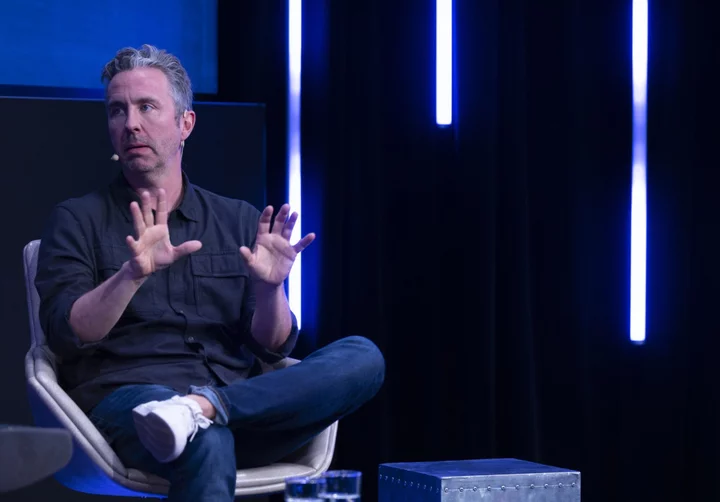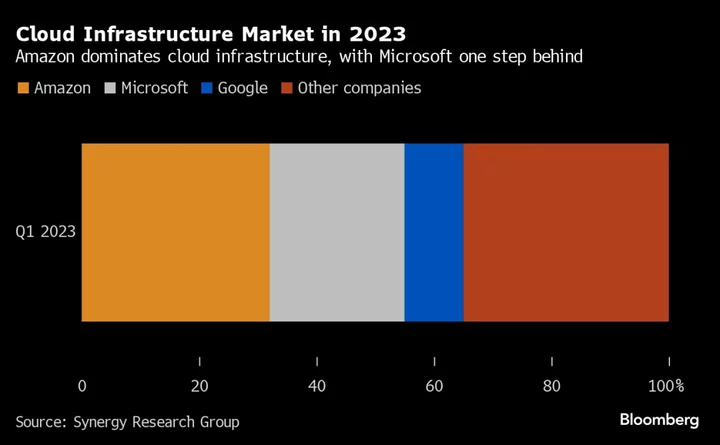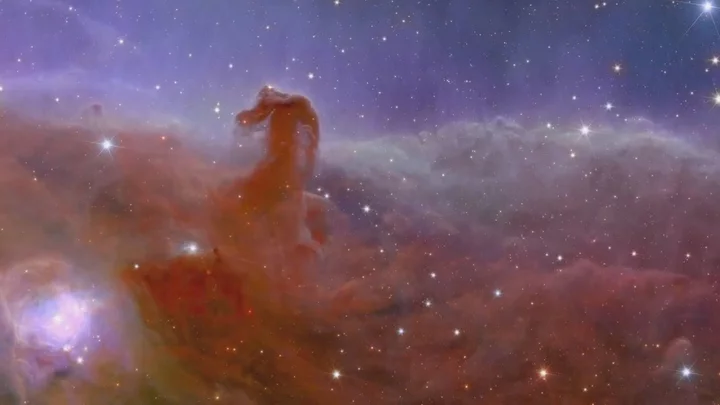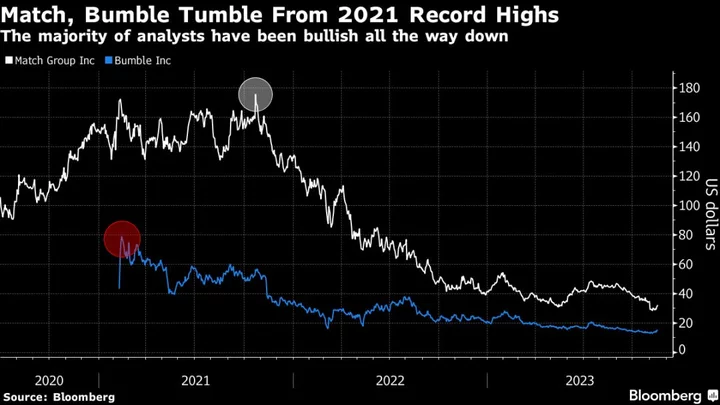
Taylor Swift Keeps Showing Up in Wall Street Research
On Thursday, a research note from BTIG landed in inboxes with the title “Now We Got Bad Blood.”
2023-11-17 04:52

Carbon-Capture Firm Deep Sky Gets $55 Million of New Capital
A Canadian startup raised $55 million from venture capital firms and governments to begin a carbon-capture plant in
2023-11-17 02:51

Gaza faces communications blackout due to lack of fuel
Israel defends blocking fuel deliveries, as the UN warns this could lead to a breakdown of civil order.
2023-11-17 02:22

Amazon Shoppers Can Buy a Hyundai Online Starting Next Year
Amazon.com Inc. customers will be able to buy Hyundai Motor Co. vehicles on the e-commerce giant’s website starting
2023-11-17 02:16

Russian Carlsberg staff arrested after business seized
Two senior managers of Carlsberg's Russian subsidiary were arrested on Wednesday over allegations of fraud.
2023-11-17 01:49

How Amazon Is Going After Microsoft's Cloud Computing Ambitions
Amazon is the driving force behind a trio of advocacy groups working to thwart Microsoft's growing ambition to
2023-11-17 01:23

SQM Sees Lithium Glut Pushing Down Prices Through Year End
The world’s second-largest lithium producer is warning investors of further price declines as a glut of the metal
2023-11-17 00:49

HelloFresh Falls Most Since IPO After Warning on Profit
HelloFresh SE fell a record 25% on Thursday, erasing €886 million ($964 million) of market value, after the
2023-11-17 00:28

Fed Latest: Barr Issues Warning on Hedge Funds’ Basis Trades
The Federal Reserve’s top banking regulator on Thursday joined a chorus of US officials expressing concern about highly
2023-11-17 00:27

Biggest-ever simulation of the universe could finally explain how we got here
It’s one of the biggest questions humans have asked themselves since the dawn of time, but we might be closer than ever to understanding how the universe developed the way it did and we all came to be here. Computer simulations are happening all the time in the modern world, but a new study is attempting to simulate the entire universe in an effort to understand conditions in the far reaches of the past. Full-hydro Large-scale structure simulations with All-sky Mapping for the Interpretation of Next Generation Observations (or FLAMINGO for short), are being run out of the UK. The simulations are taking place at the DiRAC facility and they’re being launched with the ultimate aim of tracking how everything evolved to the stage they’re at now within the universe. The sheer scale of it is almost impossible to grasp, but the biggest of the simulations features a staggering 300 billion particles and has the mass of a small galaxy. One of the most significant parts of the research comes in the third and final paper showcasing the research and focuses on a factor known as sigma 8 tension. This tension is based on calculations of the cosmic microwave background, which is the microwave radiation that came just after the Big Bang. Out of their research, the experts involved have learned that normal matter and neutrinos are both required when it comes to predicting things accurately through the simulations. "Although the dark matter dominates gravity, the contribution of ordinary matter can no longer be neglected, since that contribution could be similar to the deviations between the models and the observations,” research leader and astronomer Joop Schaye of Leiden University said. Simulations that include normal matter as well as dark matter are far more complex, given how complicated dark matter’s interactions with the universe are. Despite this, scientists have already begun to analyse the very formations of the universe across dark matter, normal matter and neutrinos. "The effect of galactic winds was calibrated using machine learning, by comparing the predictions of lots of different simulations of relatively small volumes with the observed masses of galaxies and the distribution of gas in clusters of galaxies," said astronomer Roi Kugel of Leiden University. The research for the three papers, published in the Monthly Notices of the Royal Astronomical Society, was undertaken partly thanks to a new code, as astronomer Matthieu Schaller of Leiden University explains. "To make this simulation possible, we developed a new code, SWIFT, which efficiently distributes the computational work over 30 thousand CPUs.” Sign up for our free Indy100 weekly newsletter How to join the indy100's free WhatsApp channel Have your say in our news democracy. Click the upvote icon at the top of the page to help raise this article through the indy100 rankings
2023-11-16 23:49

Match and Bumble’s 80% Stock Plunges Test Analyst Commitment
Online dating stocks have mostly been ghosted by this year’s scorching technology rally. Many on Wall Street continue
2023-11-16 23:22

Ramaswamy’s Crypto Policy Calls for Deregulation and Gutting the SEC
Vivek Ramaswamy vows to rescind most federal cryptocurrency regulations and drastically reduce headcount at the Securities and Exchange
2023-11-16 22:53
